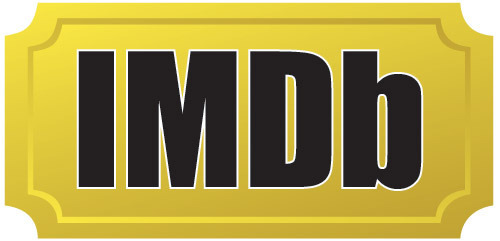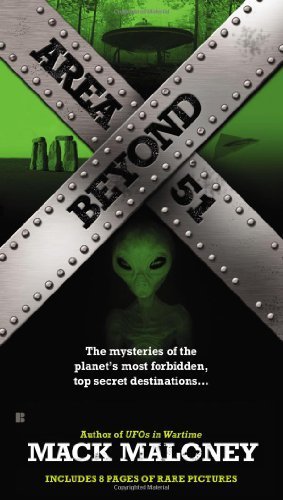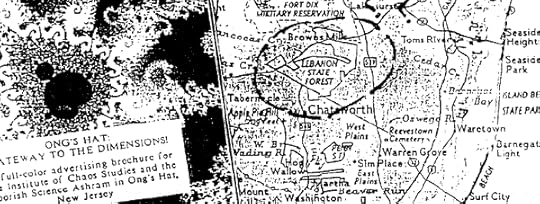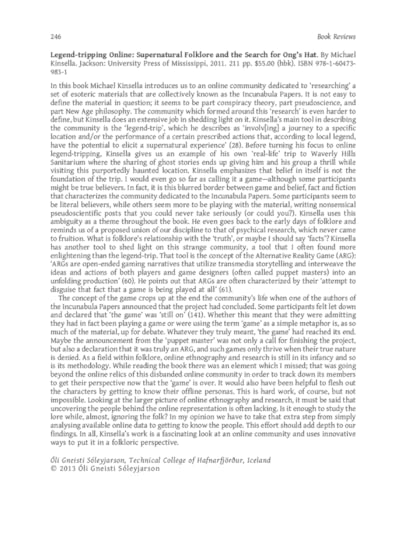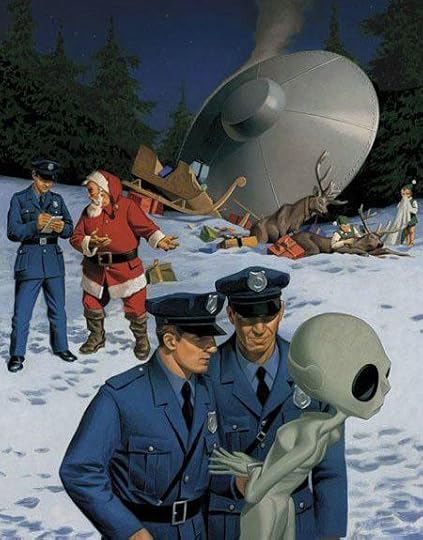Joseph Matheny's Blog, page 22
August 30, 2013
That IMDB Thing
Apparently some of you have a Google Alert for the term “Ong’s Hat” and therefore have seen the recent addition to IMDB. Specifically this listing (you’ll need IMDB Pro to see complete information). I had planned on doing a full interview with the two people responsible for this new venture when they return from shooting in Europe and I still plan on doing that. So, you’ll have to wait for that post for more info, but in the meantime, I’ll fill you in on a few “who and what” details.
First of all, to dispel some of the current confusion and rumors, this is NOT a listing for an Ong’s Hat movie. It is a listing for a new film production company, headed by:
Lucas Elliot Eberl: An American actor and director best known for his role as Birn in the 2001 film Planet of the Apes and for his film Choose Connor . In 2008, Eberl was described by MovieMaker Magazine as one of the “10 Young Americans to Watch”. http://en.wikipedia.org/wiki/Lucas_Elliot_Eberl
Zaden Alexander: An actor and filmmaker: http://en.wikipedia.org/wiki/Zaden_Alexander
Secondly, I have spoken to Lucas by phone and Zaden by email and they told me the name Ong’s Hat was chosen as a sort of homage to the ideas embedded within the Ong’s Hat story (i.e, my books/games, et al).
So, this is NOT the Ong’s Hat movie but it is a cool tip of the hat from two very talented actor/director/producer (read: DIY) types and we can’t wait to see what will come out of this new venture.
Also, there is some activity around an actual Ong’s Hat movie, and we are in talks with a few organizations to that end. We will report back when we have reached a decision on which direction we decide to take with that project.


August 12, 2013
Coincidence Control Network: Episode 50!

This week: Two lone wanderers return, the Tories hate Kim…a lot, Minority Report is getting closer, Surveillance Free day, Bradley update, Progressives get an open letter, we catch up with our lost heroes. Only God Forgives and The Holy Mountain, and much much more.
Personnel – Joe Nolan, Kim Monaghan, and Ken Eakins + SPECIAL GUESTS!
Linkypoops
David Cameron hates me – Link , Link
Retail Stores have new ways to track you – Link
The Surveillance-Free Day - Link
Bradley Manning verdict – Link
An Open Letter to Open-Minded Progressives – Link
The Holy Mountain at 40 – Link
Interludes
Chrome Hoof, The Lonely Island, Star Wars, and Arnie


August 6, 2013
Chapter on Ong’s Hat included in Mack Maloney’s Beyond Area 51 (Chapter 9: The Mystery of Ong’s Hat)
You may view some excerpts here or buy the book.
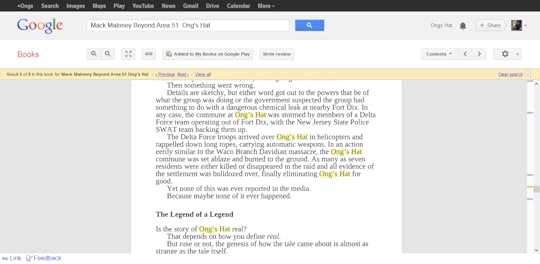
Click to enlarge
Few have ventured into the many heavily guarded, top-secret locations scattered across the earth. Even fewer have emerged with stories to tell. Yet every now and then the common man is given an illicit glimpse of something extraordinary…
In Beyond Area 51, Mack Maloney explores the truths behind the many myths and legends surrounding some of the world’s most mysterious locales. From the Homestead Air Force base in Miami, Florida to Russia’s Kapustin Yar, Maloney investigates incredible reports of extraterrestrial experimentation on animals, UFOs with road rage, and other unbelievable tales beyond our wildest imaginings. Filled with fascinating, true accounts, Beyond Area 51 will convince any skeptic of the infinite possibilities of what exists on, and beyond, our tiny planet.


July 31, 2013
Taking Back Transmedia
“Might we contrive one of those opportune falsehoods … so as by one noble lie to persuade if possible the rulers themselves, but failing that the rest of the city.”
- Plato in The Republic
“If you read it, you will be infected. If you are infected you will be InFicted. If you are InFicted, you will get UnFucted. “
- Joseph Matheny
Those who entered the digital world in the late 80’s and early 90’s were introduced to a nearly unfathomable host of possibilities for media and creativity. DVD’s offered the potential for integrative experiences that tracked user preferences and allowed for multiple story formats which changed with each viewing based on previous use, virtual reality models held the possibility for turning these experiences fully immersive, cell phones and wireless technology promised an unthought of openness to it all, and the internet allowed everyone to dream of a fully connected, creative global conversation that synchronized each aspect into a beautifully coordinated whole. Looking back on those dreams in light of growing concerns over surveillance, advertising, neuromarketing and the like one might wonder what happened to turn the dream into a lousy cold war sitcom.
It was a recent note from my friend Joseph Matheny that shuffled the dust around in my memory and made me realize that my current experience with technology isn’t quite as conducive to creativity as promised. Matheny is about to begin a series of classes for University of California – Santa Barbara (Click Here for More Information) that will cover the basics of multimedia and transmedia production, and I was glad to hear that his insights were going to be available to creatives coming into the field at a serious level. Hopefully it will bring some focus back to what these tools were intended for originally in the minds of their creators.
As one of the early pioneers in multimedia, his alternate reality game Ong’s Hat has become a reminder of what is possible with today’s technology, and a kick in the ass to today’s creatives that are allowing this potential to be misused, abused and denigrated by marketers and media corporations. Matheny’s vision of transmedia production doesn’t end with a shiny bit of intellectual property, it ends with reformatting the mytho-poetic infrastructure of consensus reality.
“Legend-telling online operates slightly differently than when performed in face-to-face situations, since computer-mediated communication permits tellers to instantly present various kinds of “evidence” and to hypertextually connect their accounts to other legends to form vast legend complexes. And when people become immersed in these legend complexes, they may participate in an online form of legend-tripping.”
- from Legend Tripping Online – Supernatural Folklore and the Search for Ong’s Hat, by Michael Kinsella (University Press of Mississippi)
We are familiar with the fruit of these initiatives though popular fiction such as Dan Brown’s Da Vinci Code, which gains social relevance by providing a doorway into an intricate matrix of contemporary myth. The central plot point focusing on Jesus’ bloodline, a revisionist role for Mary Magdalene and the many mysteries of Rennes-le-Chateau has its base in a long running alternate reality game that emerged around the site thanks to the efforts of another transmedia pioneer, Pierre Plantard.
As Mariano Tomatis, a mathematician, magician and one of the people responsible for creating the Rennes-le-Chateau museum reflects, “In the game of Rennes-le-Château, to “participate” is to narrate its story, add details, publish articles, discuss on web forums, create maps, suggest new links, propose extensions into new disciplines, write books, organize meetings.
Finite and infinite games share many similarities. Just as in the popular game Risk, the game of Rennes-le-Château offers a variety of maps, and even a real-life setting that is in scale 1:1 with the story. As in role-playing games, Rennes-le-Château offers a multitude of books full of clues, paintings, inscriptions, characters and historical backgrounds, offering a rich background of information and a powerful immersive experience. As with Sudoku, not all combinations are allowed: the characters may intertwine in space and time with relative ease, there could be any type of relationship, but it is difficult to directly connect an individual who lived in the XX century with another born two centuries earlier. But freedom of action can transform a singer into the lover of a priest, a housekeeper into his daughter, a brother into the victim of a homicide.
Both types of game are governed by rules, but in a finite game those rules cannot change; on the other hand, the rules of an infinite game must be changed continually throughout the game.”
Further, Tomatis points out how, “the whole mythology condensed around the village is having a “measurable” effect on some people “immersed” in it, despite being made up of immaterial information. (This) reflection emerged from my studies about stage magic. A good magician should be able to induce — through stories and appropriate stimuli — weird magical experiences, in which reality and illusion blur. Collecting comments from the visitors of the church of Rennes-le-Château, I have read incredible descriptions of what happens in that building – at least in their perception.” The cultivation of these experiences is a key point in true transmedia work, but it can be perverted if these techniques are used in conjunction with corrupt intention.
Transmedia artists are responsible for the games they create. With Rennes-le-Chateau, “the esotericist (Pierre Plantard) laid the foundations for a “game” that would have never come to an end, to which anyone could participate, feeling free to add something and to act as a protagonist. A very serious game, from his point of view, rich in deep spiritual implications.” Yet the inclusion of elements such as the Priory of Zion mythos has lent support to the thinly veiled anti-semitism of conspiracy evangelists such as Alex Jones and David Icke.
Both Jones and Icke are themselves transmedia artists, playing the game of myth-maker, but theirs is a perverse and self gratifying game, whose trajectory leads players further and further down a spiral of irrationality, social disengagement and paranoia. Just as corporations have discovered the power of Alternate Reality Games to create complex and invasive choice architecture into the lives of consumers, the inane adventure story sculpted by media figures like Jones and Icke merely serves to drive alternate agendas that offer no meaningful development for the players joining the game.
“The Secret Army? I won’t say “we lost,” because some of what’s left of us is still in there.”
– from Last Words: The Final Journals of William S. Burroughs
Some of the most effective early digital media was produced by friends of Robert Anton Wilson, William S. Burroughs, Kathy Acker, and other bastions of non-conformity, but one is hard pressed to find this influence today outside of aesthetics and simulation. You can rattle off a myriad of interesting projects that are currently in the works, but by and large the cohesion, vision, proficiency and passion that were there in the early days has gone to ground beneath the weight of corporate influence, self promotion and mediocrity. Unfortunately at some point effectiveness must be weighed as much as intent, and those most effective in mobilizing mass audiences are irresponsible and abrasive Limbaugh clones like Jones, who spew potent and pathetic propaganda to people ready for any answers in a rapidly changing world. Another place to look for precisely crafted transmedia is the New Apostolic Reformation movement, which has been creating one of the most complex, integral and expansive reality games through the development of an imaginal world of “supernatural living.”
What was once the playful domain of passionate professionals and amateurs has become a carefully crafted hunting ground for corporate marketers, propagandists, academics and media interests. Burroughs pirate state has become a wasteland of empty advertising, with its pioneering spirit set aside for profiteers and ego driven pundits.
The field is open for a more mature and creative approach to transmedia initiatives, but it will take the audacity of someone like Plantard, who turned a local legend into a transcendent Gnostic drama, to truly utilize today’s technology in building “legend-complexes” that can help bring understanding and union, rather than aid in further fracturing of our cultural heritage. To be trusted with the creation of a “noble lie” is to be given access to the very prima materia of cultural creation, and poor use of such responsibility can have far reaching effects.
Matheny was one of the first to recognize the power inherent in the interconnected culture that is developing through the rapid technological progress driving globalization. His insights and accomplishments help us to understand the intricacies of transmedia arts and provides a valuable tool in becoming a co-creator in the world wide game already in progress called the “21st Century.”
For those who are interested in more information on the upcoming Transmedia and Digital Media courses that Matheny is hosting in collaboration with University of California – Santa Barabara click here. If you choose to sign up for classes, use the promotional code: DAVID for an added bonus!
For those interested in learning more about Matheny’s other projects visit his website by clicking here.
-
Joseph Matheny is an American writer and transmedia artist who has created works using alternate reality gaming and transmedia storytelling methods. He holds patents for prediction, recommendation and behavioral analysis algorithms and software design. He is a published author of screenplays, white papers, technology, sci-fi, marketing and gaming books. He currently resides in Los Angeles, CA.
David Metcalfe is an independent researcher, writer and multimedia artist focusing on the interstices of art, culture, and consciousness. He is a contributing editor for Reality Sandwich, The Revealer, the online journal of NYU’s Center for Religion and Media, and The Daily Grail. He writes regularly for Evolutionary Landscapes, Alarm Magazine, Modern Mythology, Disinfo.com, The Teeming Brain and his own blog The Eyeless Owl. His writing has been featured in The Immanence of Myth (Weaponized 2011), Chromatic: The Crossroads of Color & Music (Alarm Press, 2011) and Exploring the Edge Realms of Consciousness (North Atlantic/Evolver Editions 2012). Metcalfe is an Associate with Phoenix Rising Digital Academy, and is currently co-hosting The Art of Transformations study group with support from the International Alchemy Guild.


July 9, 2013
Transmedia and Multimedia Classes August Through December

As some of you know we are working with TVSB/UCSB to offer late summer/fall/winter transmedia classes this year, and we have decided to expand our class offerings.
Please pass this information on to anyone who you know that may want to participate in the summer/fall/wiinter classes. We have an affiliate program for anyone who want’s to send students our way. If you are interested in this arrangement, let us know and we’ll issue you a affiliate code that you give to your referrals so we can track your commissions.
Benefits:
Participants will gain valuable skills that will add to their value in the job market
Artist (entertainers, writers, storytellers, visual artists, videographers/cinematographers, bloggers, podcasters, et. al) will gain skills that will help them increase their reach and broaden their platform for storytelling.
Communications people will gain new skills to help them broaden their message’s reach, learn innovative methods for product launches, retention and brand awareness with an emphasis on permission marketing versus interruption marketing
Classes
The following classes are available in Santa Barbara, CA only
Introduction to Web Communication
Eight four-hour classes – Saturdays, 1 – 5 pm. August 10, 17, 24, September 7, 14, 21, 28, October 5 (No class Labor Day Weekend).
Fee: $295 per student.
The introduction to web communication class is a hands on, comprehensive introduction to all the tools you’ll need to know to build a effective and scalable presence on the web. We’ll cover the foundation of web communication principles, the tools you’ll need to create and maintain a web presence that will have impact and reach, and some of the design principles you’ll need to expand and grow your presence.
We’ll cover all of this in eight four hour classes, meeting each week at the SBTV studios.
You’ll need a laptop computer (Mac, Windows or Linux ok). If you don’t have one, please make arrangements with TVSB to use one of their lab computers. Note, lab computers are limited. We will be taping this class for later release as a broadcast on SBTV and an archive on Archive.org.
Introduction to Podcasting
Eight four eight-hour classes – Saturdays, 1-5 pm. October 19, 26, November 2, 9, 16, 23, December 7, 14 (No class Thanksgiving Weekend).
Fee: $295 per student.
Ever thought about having your own on-line radio show? You can! The Introduction to Podcasting class is a hands on, comprehensive introduction to everything you’ll need to know to create and distribute your own audio or video podcast show.
We’ll cover all of this in eight 4 hour classes, meeting each week at the SBTV studios.
You’ll need a laptop computer (Mac, Windows or Linux ok). If you don’t have one, please make arrangements with TVSB to use one of their lab computers. Note, lab computers are limited. We will be taping this class for later release as a broadcast on SBTV and an archive on Archive.org.
Other classes in Santa Barbara, Los Angeles, San Francisco Bay Area
Transmedia Design and Implementation
Eight 4-hour classes – Saturdays, 1 – 5 pm.
(No class Labor Day Weekend).
Fee: $295 per student, minimum 5 students per session.
Transmedia: It’s all the buzz, it’s a word everyone is using, everyone has heard it, but do you really know what it means or how to create a working and effective transmedia story/alternate reality game? Now is your opportunity to learn!
This summer, a pioneer in alternate reality gaming and transmedia,will be teaching intimate classes in Transmedia creation and implementation. His work has been the subject of a university level text book on the subject and Game(tm) magazine credited him in the May 2013 issue as the person who created the ARG/Transmedia story that left it’s mark indelibly on gaming and storytelling.
“…its DNA – the concept of telling a story across various platforms and new media- is evident in every alternate reality game that came after.” – GAME(tm) May 2013
In this special and one of a kind class you’ll learn the basics of ARG/Transmedia design, seeding, character development, tools and more. During the course of this 8 week intensive, the class will co-design an ARG/Transmedia story-game that will launch at the end of the semester, which you will receive credit for.
Don’t miss out on this unique opportunity to enlarge your storytelling platform, strengthen your media creation toolbox, meet potential new collaborators and have fun in the process!
We’ll begin booking classes to begin in August through December that will be will be conducted in the following areas, subject to interest: Santa Barbara California, Los Angeles California, San Francisco Bay Area (California). Other areas for future classes: New York, NY, Seattle, WA, Portland, OR, San Diego, CA, Chicago, IL, Austin, TX and others in consideration. If you are interested in hosting or helping us host a class in your areas, please contact us.
SIGN UP
Contact us at http://www.wildcardtm.com/contact and let us know which city and classes you’d like to sign up for and we’ll get back to you with dates available in your area.
About the instructor: Joseph Matheny is a 25 year Silicon Valley veteran, transmedia and general media pioneer who played a part in the origins of PDF, DVD and podcasting. His work has been featured in The Wall Street Journal, MTV, NHK Japan, Boing-Boing, Game Magazine and a multitude of other media and computer trade publications.
Recently, his work was profiled in Games(TM) magazine, where it was said of his work, Ong’s Hat:
“Ong’s Hat was more of an experiment in transmedia storytelling than what we would now consider to be an ARG but its DNA – the concept of telling a story across various platforms and new media- is evident in every alternate reality game that came after.”
http://en.wikipedia.org/wiki/Joseph_Matheny


May 16, 2013
The Rise Of The ARG: games™ investigates alternate reality games and what the future has in store for the curious experiment.
Game magazine: Issue 135, available now at newsstands, print or digital.
Excerpt:
“But what exactly is an ARG? For the community, that definition is largely rooted in the ‘this is not a game’ aesthetic. ARGs are games that do not acknowledge that they are games; they pose as alternate realities hidden away in streams of dormant internet code. Their stories exist not in unified narrative, but are spread across phone lines, email addresses, websites and any other forms of media that the puppetmasters – that is, the game’s creators – deem to be useful. ARG’s exist in real-time as constantly evolving, potentially boundless storytelling experiences.
Yet despite these definitions, there remains no established rule set. “There aren’t really rules for ARGs,” says writer and transmedia artist Joseph Matheny. “There’s the basic TINAG principle that everybody has to practice, and things like the launch has to be clandestine and the rabbit hole – that is, the first media artifact that draws in players – can’t be obvious. But you’re not limited to those rules. An ARG can be whatever you want it to be as long as you’re building an immersive world for players to embed themselves; to cross the scene and to become an active participant in the story.”
Matheny himself was there at the beginning of the ARG, when the increasing prominence of online media got him thinking about new forms of storytelling. “I’ve been a tech person since the Eighties,” he reminisces. “I was an IT expert and moved up into software, and I used to play the Steve Jackson games a lot. I also played the Flying Buffalo play-by-mail games, which were kind of like a LARP but done through mail, phone and faxes. You would send your mailing address and your phone number and you would start getting stuff in the mail.
“I started thinking about the integration of story arc within games and started putting all of these pieces together, and Ong’s Hat came out of that.”
Ong’s Hat was more of a experiment in transmedia storytelling than what we would now consider to be an ARG, but it’s DNA – the concept of telling a story across various platforms and new media – is evident in every ARG that came after.
The project, also known as the Incunabula Papers, was a selection of documents posted on The Well, a pioneering internet social site in the late Eighties. Having sat dormant for a decade, the documents provoked a widespread online investigation in the late Nineties, with participants immersed in a fictional story about alternate realities via bulletin board systems, old Xerox mail art networks and early eZines.
With Ong’s Hat, Matheny took the concept of ‘legend tripping’ – that is, the act of venturing to areas of some horrific and supernatural event a la The Blair Witch Project – and shifted it online. “I set up this mythos, and hid elements of it all over the internet,” he remembers. “There were phone numbers that you could call and you would get strange voice mail messages; you might even get a call back from one of the characters. Everybody would come at it from a different angle. It was not a zero-sum game. The whole thing was set up to be an infinite play, so different people would get different things out of its persistence.”
This element of the experience, with players reassembling the scattered elements of the story in order to determine exactly what it all meant, would go on to become one of the defining features of the ARG. Rather than present an A to B narrative, ARGs present storytelling at a form of archaeology, the players themselves responsible for discovering and building the chronologically unified narrative.
“People who are interested in this kind of experience are interested in working together. It’s what the community calls the ‘collective detective’ scenario,” says Matheny. “One of my influences was also the murder mystery theatre things that they used to do…I think that people like that kind of stuff. They like to feel that the story is crossing the proscenium and they’re immersed in the story – even to the point of being a character in the story. I think that’s the hook with ARGs.””
Game magazine: Issue 135, available now at newsstands, print or digital.


January 19, 2013
This site has become a museum and occasional link dump. S...
This site has become a museum and occasional link dump. Should you dare to wonder what I’m thinking about these days, wander over to incunabula.org.


January 6, 2013
RAW Pack
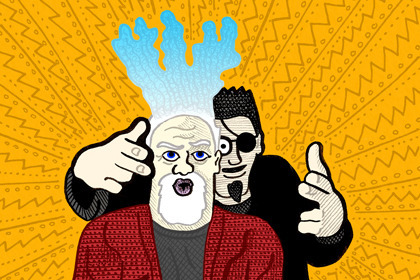
I plan to commercially release four more pieces from my Robert Anton Wilson archives later this year, so in preparation for that, I have put the last four I released into the public domain. After a sufficient time, I will do the same for the four I will be releasing in 2013, and so on, until I have exhausted my archives and they are all in the public domain.
Everything except “The I in the Triangle” video is hosted on Archive.org (links below each title). Unfortunately, Archive.org can’t seem to facilitate a decent sized MP4 of that video, so I have included it in a all inclusive torrent pack here.


January 1, 2013
Legend Tripping and the Search for Ong’s Hat Reviewed in Folklore Volume 124, Issue 2, 2013
Óli Gneisti Sóleyjarson Technilcal College of fHafnarfjordur, Iceland
Folklore Volume 124, Issue 2, 2013


December 25, 2012
Happy holidaze and a pleasant New Year
Not my holiday, nor my calender, but enjoy yours, whatever it is.
Here’s a few presents recently released into the wild.
Robert Anton Wilson Remembered [Unabridged] (Holiday gift)
The Lost Studio Session (Robert Anton Wilson) [FULL]



